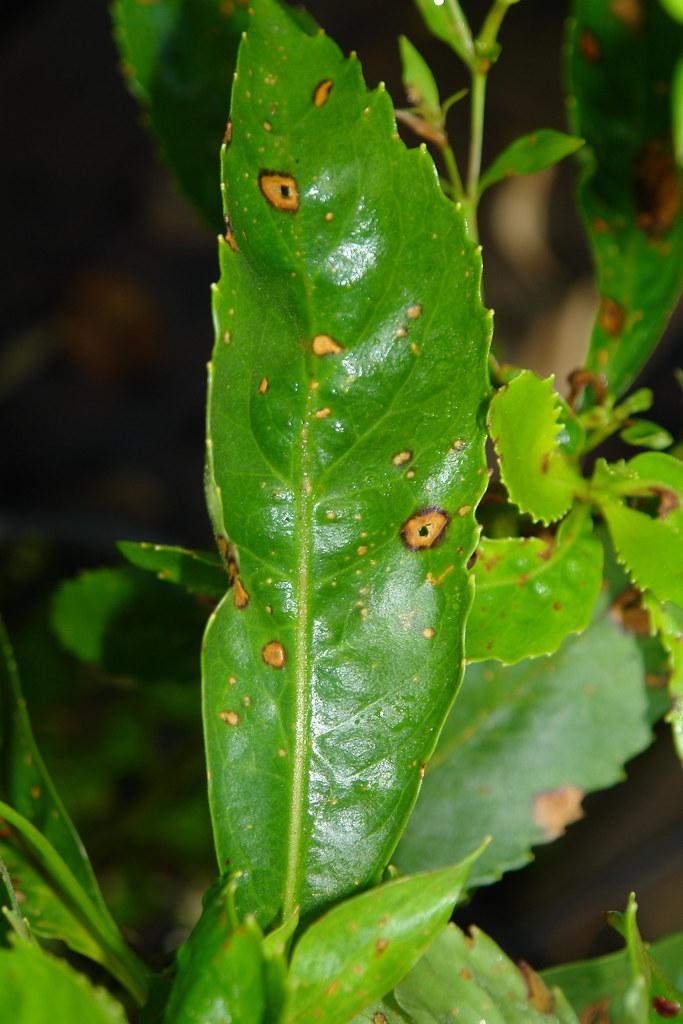
Alternaria leaf spot
Alternaria alternata
Also Known As - Leaf spot Alternaria,Black moldWhat is Alternaria leaf spot (Alternaria alternata)?
Alternaria alternata is a fungal pathogen that can cause leaf spot diseases in various economically important plants globally, including broccoli, tomato, chilli, potato, citrus, apple, and many others, leading to substantial postharvest losses. Symptoms manifest as small, dark brown to black spots on leaves, stems, and fruit, often with a concentric ring pattern. The spots enlarge, merging to cause severe blighting and tissue necrosis. Additionally, it induces blights, stem cankers, and fruit rot.
How does Alternaria leaf spot (Alternaria alternata) occur?
Alternaria alternata reproduces through both asexual and sexual methods. In asexual reproduction, it produces tiny spores called conidia, which can be easily carried by wind or water, allowing the fungus to spread. Sexual reproduction occurs when compatible mating types come together, leading to the formation of special structures and the production of sexual spores called ascospores. Rapid spread occurs under favorable conditions of high humidity and warm temperatures.
Symptoms
1 - Impact on Plants
• Alternaria alternata can cause various diseases in plants, such as leaf spot, stem cankers, blights, and fruit rot. • Severe infections can result in significant yield losses, affecting agricultural productivity.
2 - Soil Health
The fungus can survive on plant debris in the soil, contributing to the persistence of the disease and which may affect soil health and nutrient cycling, especially if infected plant material is not properly managed.
3 - Environmental Consequence
The disease can impact the aesthetic value of ornamental plants and reduce crop quality, affecting both commercial and natural ecosystems.
Solutions
1 - Cultural Practices
• Avoid planting susceptible crops in consecutive seasons to reduce the buildup of Alternaria alternata. • Remove and destroy infected plant debris to minimize the presence of the fungus. • Promote air circulation and reduce humidity, creating less favorable conditions for disease development.
2 - Disease-Resistant Cultivars
• Plant-resistant varieties of crops that have been specifically bred to withstand Alternaria alternata infections. Consult with local agricultural extension services or plant breeders to identify and select resistant cultivars suitable for your region.
3 - Biological Control
• Biological control agents: Trichoderma spp. (e.g., T. harzianum, T. viride), Bacillus spp. (e.g., B. subtilis), Pseudomonas fluorescens, Streptomyces spp. These agents have shown potential for suppressing Alternaria alternata. Ensure proper handling and application of biocontrol agents to maximize their efficacy.
4 - Fungicides
Commonly used fungicides for managing diseases caused by Alternaria alternata include Quash (metconazole), Inspire (difenoconazole), Pristine (pyraclostrobin/boscalid), Fontelis (penthiopyrad), and Rovral, Nevado (iprodione). It is important to check local regulations and consult with agricultural authorities or licensed pesticide dealers for approved fungicides in your area.
